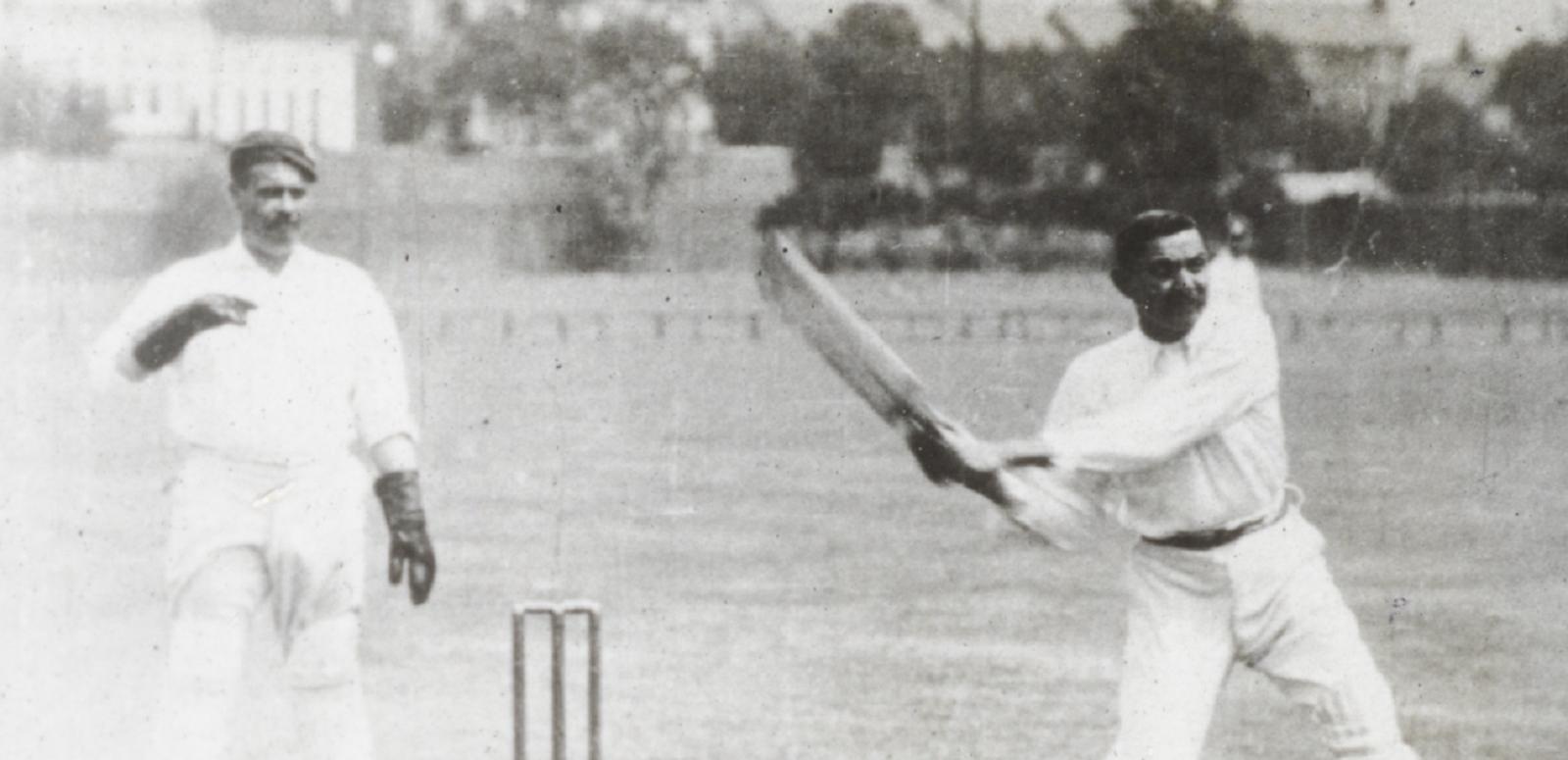

Rare 1901 cricket footage brought back to life by NFSA!
22 February 2016
Rare 1901 cricket footage brought back to life by NFSA!
The National Film and Sound Archive of Australia (NFSA) has built a custom-made device in order to digitise and publish a rare ‘Kinora’ reel featuring 1901 footage of legendary cricketers K.S. Ranjitsinhji and C.B.Fry. It is now available on YouTube (https://www.youtube.com/watch?v=-8rtdLeKico).
NFSA experts then photographed all 465 frames in the reel to create a 19-second film, showing the famous cricketers (who played for Sussex and England in the early 1900s) in action for the first time in more than 100 years. The footage was taken in Hove, England, and the reel was recently donated to the NFSA by cricket historian Glenn Gibson.
The Kinora was the world’s first home movie entertainment system. It followed the same principle as a flip book: a reel with a series of photographic images was placed in a player, and by turning the crank handle the images were displayed one after another, creating the illusion of movement. As the image was not projected, viewing was limited to one person or a small group.
The NFSA does not have any Kinora players, which are very rare. Due to the circular construction of the reel it was not possible for it to be laid flat on a scanner to digitise the photographic images, so the NFSA experts had to build a device that could replicate the mechanism of a Kinora player, in order to photograph each frame individually.
NFSA Curator Jeff Wray explained: ‘In the absence of a Kinora player, and with such a significant donation, we had to find a way to capture the moving image. Our Conservation team suggested adapting a film winder to replicate the original Kinora mechanism, and a metal ruler to hold the images so they could flick through the reel without damaging them. Our custom-made device allowed the reel to be viewed, and held the images in place to be photographed, one by one.’
The resulting 465 high definition photo frames were animated and stabilised using advanced compositing software, to produce a moving image close to the original. The resulting film shows Ranji and C.B. Fry in batting action.
The custom-made device will be used to digitise the six remaining Kinora reels in the NFSA collection, which deal with various subjects such as a woman dancing, the launching of a life boat, and a man reacting to reading a letter.
About the Kinora
The Kinora was the first home movie entertainment system and was invented by Lumière in France in 1897. The rights were later purchased by the British Mutoscope & Biograph Company.
The Kinora followed the same principle as a flip book. Instead of being bound in a book, the photographic images were attached to a reel which could then be rotated by a crank handle, bringing the images into motion. Kinora reels ran for approximately 30 seconds and could be purchased or rented for home use. Topics that could be viewed ranged from the everyday (man reading a letter) and topical (launching of a lifeboat) to historical events and moving images of sportspeople and entertainers of the day. Reels of family members could also be made at photographic studios, and from 1908 a camera was available for people to purchase and make their own Kinora home movies. As the popularity of cinema increased, interest in Kinoras waned. Following a factory fire in 1914, Kinora ceased production.
Contact
The 19-second film of cricketers Ranji and C.B. Fry, as well as a 90-second mini-documentary on the Kinora project, are both available for media use. Curator Jeff Wray is available for interviews. Please contact National Media Manager Miguel Gonzalez, (02) 8202 0114 or Publicity@nfsa.gov.au for more information.
Attachments
Download: Rare 1901 cricket footage brought back to life by NFSA!
The National Film and Sound Archive of Australia acknowledges Australia’s Aboriginal and Torres Strait Islander peoples as the Traditional Custodians of the land on which we work and live and gives respect to their Elders both past and present.